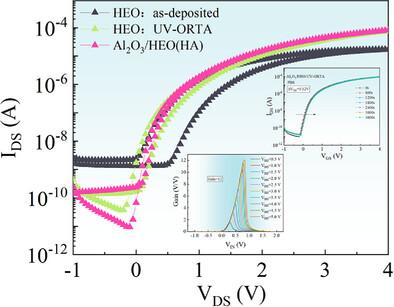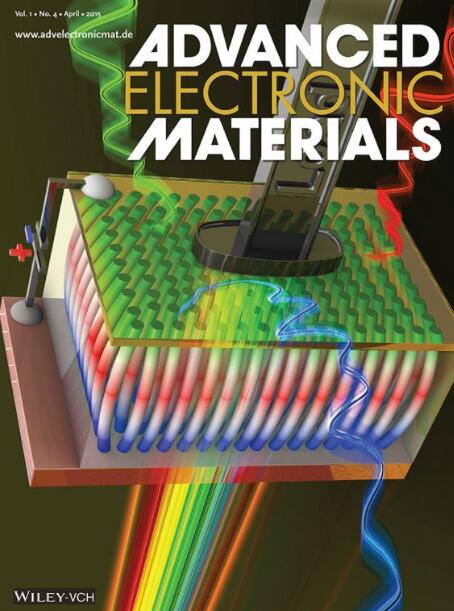Fully Sputtered a-IGZO TFTs with Ultrathin Al2O3 Passivation and Low-Thermal-Budget Annealing for Enhanced Logic Circuit Performance
IF 5.3
2区 材料科学
Q2 MATERIALS SCIENCE, MULTIDISCIPLINARY
引用次数: 0
Abstract
Developing low-temperature sputtering for gate dielectrics is crucial for simple, flexible oxide TFT fabrication. However, such films suffer from low capacitance, high leakage, and high interfacial defects. This work proposes a synergistic strategy using an ultrathin alumina passivation layer combined with ultraviolet-assisted oxygen ambient rapid thermal annealing (UV-ORTA) to enable fully low-temperature sputtered high-performance amorphous indium gallium zinc oxide (a-IGZO) TFTs. The UV-ORTA process significantly improves the gate dielectric by reducing oxygen vacancies, increasing optical bandgap, and boosting capacitance density. The sputtered alumina layer effectively optimizes the dielectric/active layer interface, reducing defect density comparably to atomic layer deposition. TFTs fabricated entirely by sputtering at 200 °C demonstrate high performance: saturation mobility of 14.5 cm2·V−1·s−1, on/off ratio of 8.6 × 106, subthreshold swing of 0.09 V/dec, and good bias stability. Resulting inverters show full-swing operation, sensitive dynamic response, excellent frequency stability, and a voltage gain exceeding 12. This strategy provides a promising solution for low-temperature, fully-sputtered all-oxide TFTs compatible with flexible displays.

采用超薄Al2O3钝化和低热预算退火的全溅射a-IGZO tft提高逻辑电路性能
发展低温溅射的栅极介质是关键的简单,柔性氧化物TFT制造。然而,这种薄膜存在低电容、高漏电和高界面缺陷的问题。这项工作提出了一种协同策略,使用超薄氧化铝钝化层结合紫外线辅助氧环境快速热退火(UV-ORTA)来实现完全低温溅射高性能非晶铟镓锌氧化物(a- igzo) tft。UV-ORTA工艺通过减少氧空位、增加光带隙和提高电容密度显著改善栅极介电性。与原子层沉积相比,溅射氧化铝层有效地优化了介电/有源层界面,降低了缺陷密度。在200°C下完全通过溅射制备的tft具有良好的性能:饱和迁移率为14.5 cm2·V−1·s−1,开/关比为8.6 × 106,亚阈值摆幅为0.09 V/dec,并且具有良好的偏置稳定性。由此产生的逆变器具有全摆幅工作、灵敏的动态响应、优异的频率稳定性和超过12的电压增益。该策略为与柔性显示器兼容的低温、全溅射全氧化tft提供了一个有前途的解决方案。
本文章由计算机程序翻译,如有差异,请以英文原文为准。
求助全文
约1分钟内获得全文
求助全文
来源期刊

Advanced Electronic Materials
NANOSCIENCE & NANOTECHNOLOGYMATERIALS SCIE-MATERIALS SCIENCE, MULTIDISCIPLINARY
CiteScore
11.00
自引率
3.20%
发文量
433
期刊介绍:
Advanced Electronic Materials is an interdisciplinary forum for peer-reviewed, high-quality, high-impact research in the fields of materials science, physics, and engineering of electronic and magnetic materials. It includes research on physics and physical properties of electronic and magnetic materials, spintronics, electronics, device physics and engineering, micro- and nano-electromechanical systems, and organic electronics, in addition to fundamental research.
 求助内容:
求助内容: 应助结果提醒方式:
应助结果提醒方式:


